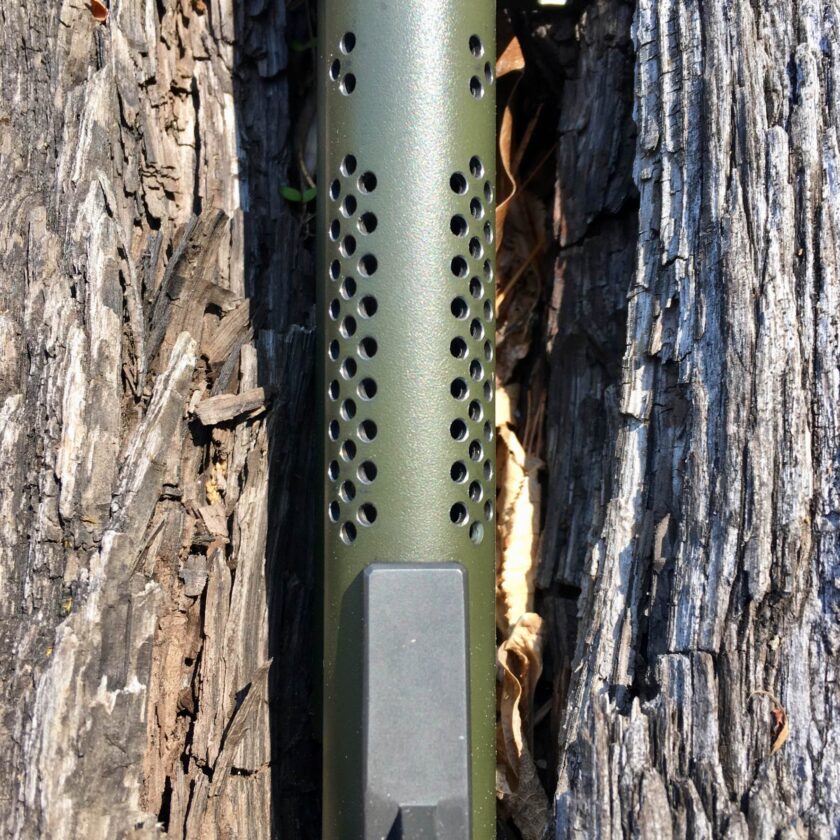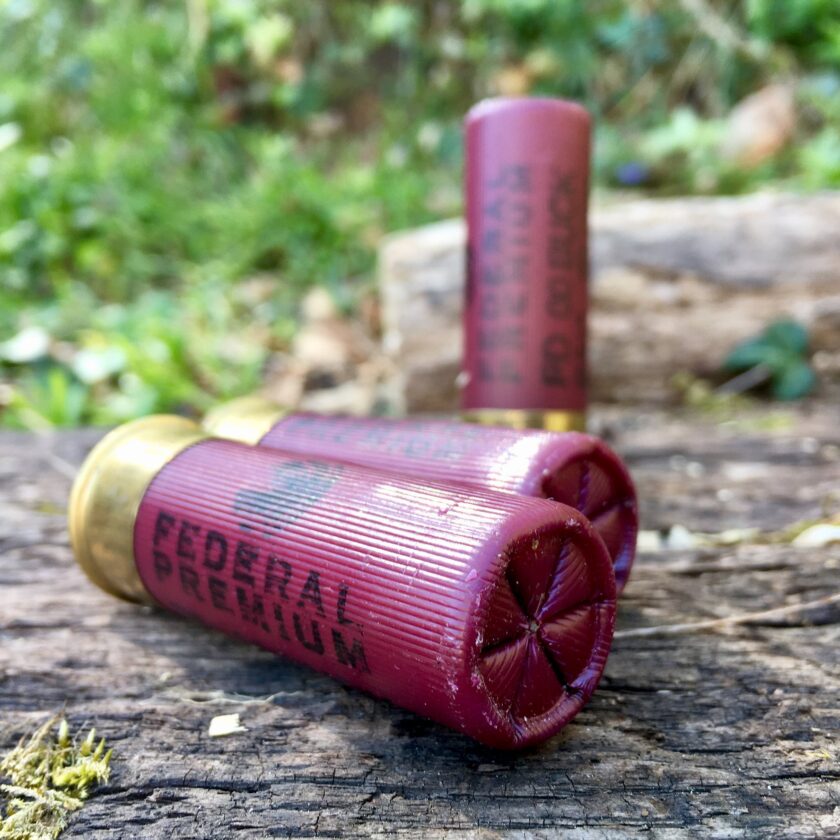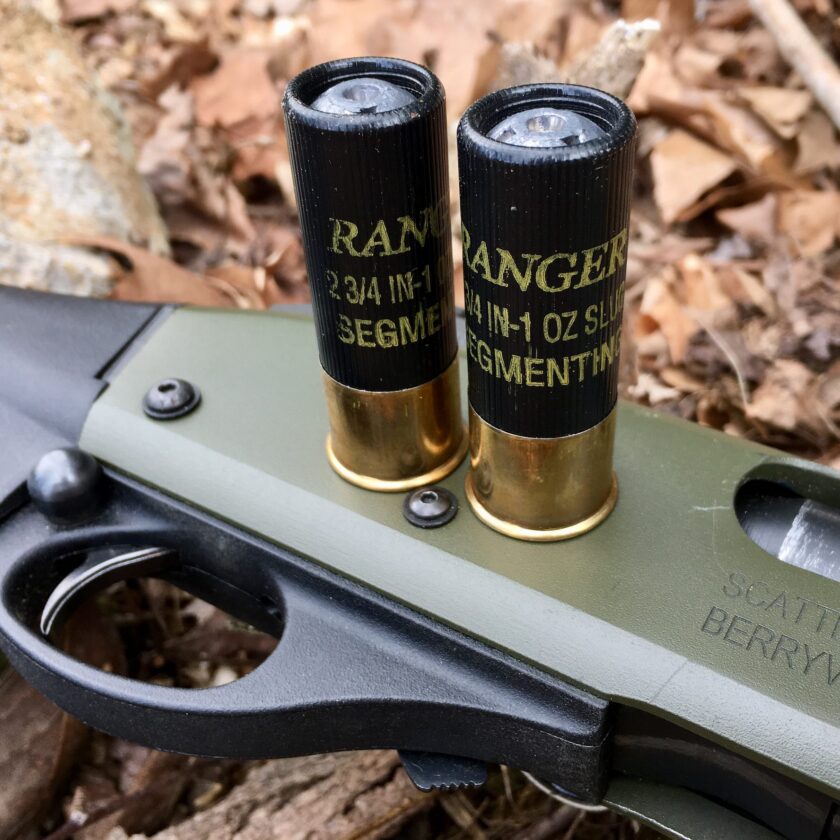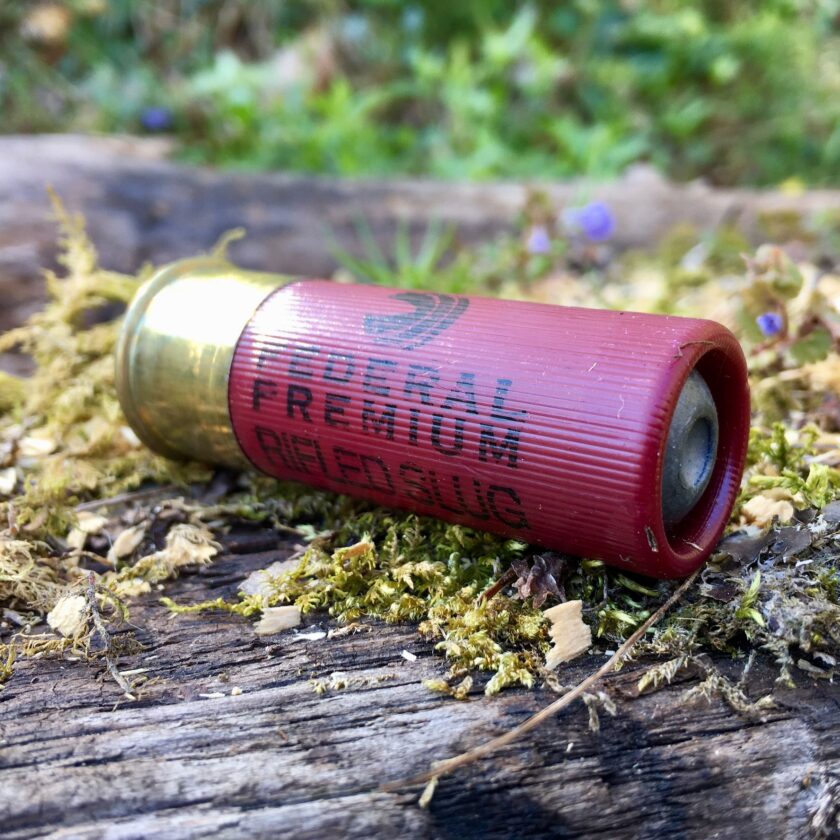In my last article about shotguns I mentioned being a fan of the slug. I had planned to address this, but it drew quite a bit of email, so I’m addressing it a little sooner than I expected.
This article contains affiliate links.
First, before we get going I want to quickly say something: I’m not giving you advice on what you should do, or trying to convince you to do what I do. If you don’t like slugs, or shotguns, or even long guns that’s cool, too – do you.
Second, what I would like to do is demonstrate and maybe pass on to you is a thought process. If you’re blindly following gun blog advice or basing your defensive ammo choices on what is available at WalMart, you should probably put just a bit more thought in. Here is how I got where I’m at. And I’ll probably change my mind at some point, so take it for what it’s worth.
Third, I don’t believe slugs are the end-all/be-all shotshell. As a case study in this matter: my brother-in-law is finally getting on board with some self-defense stuff. The other night he mentioned his lack of ammo for his shotgun. Did I give him slugs? No, I handed him a box of 50 Federal FliteControl 00 Buck. I’m not belittling him by doing so; I’m just giving him the slightly more forgiving option because he has put comparatively very, very little thought into the matter.
Welcome to Slugs
I didn’t come to the slug willingly, or through the happiest of circumstances. About three years ago I was (and generally still am) a big fan of Federal FliteControl buckshot. My 870 was easily a 40-yard gun with FliteControl loads (defined as being able to keep all pellets in the down-0 zone of a IDPA target) and I was perfectly happy with that. Ok, not perfectly happy. Wanting to see if I could squeeze just a bit more distance out of the dozen-gauge, I couldn’t leave well enough alone. I even pitched – and was approved to write – an article for an outlet where I occasionally write.
I decided to send the barrel to Vang Comp Systems for the their famous treatment. And I did, but before sending it off I recorded “before” patterns with 8 or 10 00 buckshot loads, provided by the outlet I was planning to write for. The results were pretty predictable. The Flite Control loads held everything in a single hole out to about 10 yards, and you could cover everything with the palm of your hand out to 20 or 25. Patterns with the lesser buckshot loadings were less predictable, but generally larger. When I received the barrel back and finally got to the range…

Boy was I disappointed. I’m sure my gun was an extreme anomaly, but my patterns had actually opened up. Some became fairy erratic. My 40-yard shotgun was, once again, a 15 to 20-yard shotgun. I sent the barrel back to VCS and they did some correction, but mentally, the damage was done. I lost a great deal of confidence in the particular combination of my shotgun and buckshot.
In the long run I’m glad this happened. It got me thinking, and forced me to think about slugs.
“Modern” Buckshot
Buckshot has undergone a pretty serious transformation in recent years. I mentioned the Federal FliteControl load, which is THE vanguard of “modern” crop of buckshot. FliteControl buckshot pellets are copper plated to prevent deformity as they travel down the barrel. They are buffered inside the wad with powdered plastic, again to prevent pattern-spoiling deformity. And they are packed into the famous, namesake FliteControl wad. These innovations have created a buckshot load that is capable of phenomenally tight groups and, as a result, increased range. I strongly recommend letting Chris Baker tell you more because FliteControl ammo is really, really cool.

I bring this up because FliteControl buckshot is what a lot of the shotgun cognoscenti are all-the-fuck about these days. Why? Again, the tighter pattern allows much more precise shot placement, and extends the useful range of the shotgun, maybe even doubling it, before you have to worry about pellets straying off the target. I totally appreciate both of these benefits. In fact, I really, really dig what FliteControl buckshot is capable of.
But, I’m really, really hesitant to base my entire concept of the shotgun – my knowledge of its patterns at various distances, range, etc. – on the availability of a single, factory load.
Load Dependency
The most important reason reason I prefer slugs is that I simply don’t like being dependent on a single, specific factory loading. That’s just an inherently unstable model. Oh sure, a lot of pistols and rifles have a preference for different loads. Some guns just shoot some loads better. The variation between one load and other in a pistol or rifle is on a completely different scale, though. I’ve yet to shoot a handgun whose effective range was doubled – or halved – based on the ammunition I could find (all other things being equal, and ignoring off-the-wall stuff like shotshells).
At this point I probably know what you’re thinking: ” Justin, just buy a couple of cases of ammo and you’re good to go!” I thought of that, too. I have comfortable quantities of ammo, especially defensive ammo, including FliteControl buckshot. But what if my basement floods? Granted, it would have to flood a lot, so…what if a pipe burst and above my office and soaked my ammo? What if my house were broken into and my ammo stolen? What if my house burned down?

A lot of guys seem to be basing their entire shotgun philosophy around a single, factory shotshell. Over the past four years we’ve gotten really comfortable with the idea that we can buy any ammo we want, any time we want, in any quantity we want. The current COVID ammo panic is a bit of a reality check. You might be able to find some random second-tier 00-buck, but if you have your heart set on a case of Federal 13300. . .
With slugs we are far, far less dependent on ammunition to keep our shotguns running at the same basic level of capability. Any slug is good enough. While there are a couple of slug loads my shotgun seems to prefer, any variation is now a variation in group size, not pattern size. I can restock with just about any slug, confirm it (and adjust my sights to it, if need be) and know that I’m still going to be able to make hits at any distance that my skill allows me to make hits at without losing pellets.
Penetration? Penetration.
The common contraindication for slugs is penetration and there is certainly some merit here. A slug, missing a human target, will likely penetrate exterior walls of your home with ample energy. This may be problematic, and a way in which buckshot has a mild advantage: it is less apt to penetrate a wall and retain a lethal amount of energy. Note that I said “less apt,” not “guaranteed not to.” If you miss with buckshot what are you actually hitting? If you’re hitting a window (not unheard of; your house probably has a bunch of ’em) you may be sending a load of buckshot right out the window, still mostly unimpeded.
Still, I do acknowledge that buckshot has an advantage here, and my choice is somewhat a product of my environmental variables. In all likely directions, based on how my home is laid out and my entryways are situated, I have safe backstop between me and other homes. A loose slug (or load of buckshot) in any of those directions is only going to find trees and mountain. If I were still in an apartment in a 400-door building? I certainly wouldn’t deploy slugs. Really thinking about it, I probably wouldn’t be comfortable with buckshot, either, considering I could hear normal conversation on the other side of three of the four walls.
On the other hand, when penetration is a good thing, the slug delivers. I was recently reminded of this in reading Ed Mireles’ FBI Miami Firefight. Agent Mireles – the FBI agent credited with ending the Miami shootout of 1986, deployed a buckshot-loaded shotgun against the gunmen. Agent Mireles made good hits, but the car’s body and glass soaked up most of the shot, rendering the 12-gauge ineffective against the killers. Agent Mireles says to this day he’s a fan of slugs for that reason. Now, I already know what you’re thinking.
In a self-defense situation you don’t need to penetrate intermediate barriers like car bodies and interior walls. Got it – we’re in agreement. I like having the option, though, should things get a little sporty. And speaking of penetration: what exactly does happen when a slug hits a person?
Over-Penetration?
To be honest, I’ve mostly just assumed that slugs generally passed on through humans with plenty of energy to spare. Turns out that’s not necessarily the case. Apparently, the soft lead slug does a pretty good job of staying inside the human body. If you go read Gunshot Wounds: Practical Aspects of Firearms, Ballistics, and Forensic Techniques, Third Edition, by Vincent J.M. DiMaio, you’ll find that Dr. DiMaio has never observed a soft lead slug to exit the human body. I’ll be honest, this was kind of hard for me to swallow the first time I read it, but it was backed up by Dr. Gary Roberts at around 3:30 in this interview on Primary & Secondary. To be clear that does not include Brenneke slugs or copper sabot slugs or the like – just the soft lead, Foster variety.
So the shotgun loaded with slugs sort of gives me the best of both worlds: a very hard-hitting round that is unlikely to overpenetrate a human target, and a round with a little extra ability to punch through intermediate barriers.
Range
Finally, I like the range the slug offers. From 0 yards to 100 yards I know where I’m able to hit, and know where all my “pellets” are going because I’m dispensing them one at a time. If I were back in a major metro area, I would probably go back to buckshot, assuming I were going to stick with the shotgun. But where I I live now, I have the occasional bear in the yard. As long as he leaves me and mine alone, I brook no complaint with his respectful presence. Should that change and the bear become a threat to my family, to the neighbors, or to livestock, I am prepared to deal without without having to get within 30 yards (what’s the “Tueller drill” distance for bears, anyway? They’re faster than people and they already have their weapons out.).
But I’m not going to cop out and say it’s just for bears. My town has two cops (not two precincts or two battalions – two officers) on patrol at any given time, along with one dispatcher and one captain on duty at the station (and, of course, “the detective” during the day shift). Even if they have nothing going on, I live outside of town. My county is vast, and like a lot of rural counties, our Sheriff’s Office has tens of deputies, not hundreds or thousands. If I have to take care of myself in some situation that is outside of the typical “self defense” scenario I feel adequately prepared to do so. Do I think that’s very likely? No, I don’t. In fact, I think it’s pretty remote. Then again, back in October I thought a pandemic that would shut down the world economy sounded pretty remote. I don’t want to feel about slugs like I feel about those N95 masks I put on my Amazon wish list back in 2017 and never got around to ordering.
Winchester Ranger Slugs
The slugs I’m using are the Winchester Ranger Segmented slug. These are a full-power, 1-ounce slug. I ordered a couple cases of these a few months back and it turns out my gun really digs them. I ordered them after reading an article on Active Response Training. The Ranger slug (also available as the PDX-1) is segmented into three pieces that break up upon impacting soft tissue. This results in three, large, roughly equal “chunks” of slug, each penetrating about 12″ in ballistic gelatin. When passing through sheet metal or windshield glass, though, the slug performs like a normal slug and passes through. Pretty neat. There is one contraindication to these: they certainly aren’t a “reduced recoil” slug. With a strong push/pull technique they can certainly be managed.

I’m not really recommending these though. Regardless of whether you prefer slugs or buckshot (or an AR for that matter) you need to purchase some ammo and do some testing with your gun. Most importantly, find something that is absolutely, 100%, without fail reliable in your gun. Find something that groups (or patterns) well in your gun. And nowadays, find something you can get an adequate quantity of.
Am I breaking my own advice by using a specialty slug? Not at all. As long as I have the choice I’m going the run the ammunition that is most accurate and 100% reliable in my gun. If these slugs run out, are stolen or destroyed, or whatever, I can switch to some other slug – likely whatever I can find at my local gun shop – and still be pretty confident. But I’m not going to start carrying the cheapest, crappiest ammo now because “some day I might have to.”

In Summary
Allow me to briefly restate some key points:
- I don’t like being dependent on very specific ammunition.
- The Foster slug doesn’t over-penetrate on human targets but potentially provides some additional penetration against intermediate barriers.
- The slug offers additional range over even the best buckshot loads. One should be able to be effective with a slug out to 75 or 100 yards.
Pretty much everyone is in agreement that slugs are a better choice than buckshot outside of 35- or 40-yards. Likewise slugs are the go-to option inside of those distances if intermediate barriers are anticipated, like windshields or car bodies. So my question becomes, is buckshot objectively better than slugs inside those distances, and without intermediate barriers? That’s not a rhetorical question, or a straw-man – I’m asking. Am I missing some huge benefit buckshot offers over slugs? I freely and openly admit that I may be overlooking something. If I’ve missed something empirical (not emotional, but something demonstrable and repeatable) please let me know.
The result of true learning is change, and I am always willing to learn.






1 thought on “Shotgun Ammo Selection: The Slug”
Comments are closed.